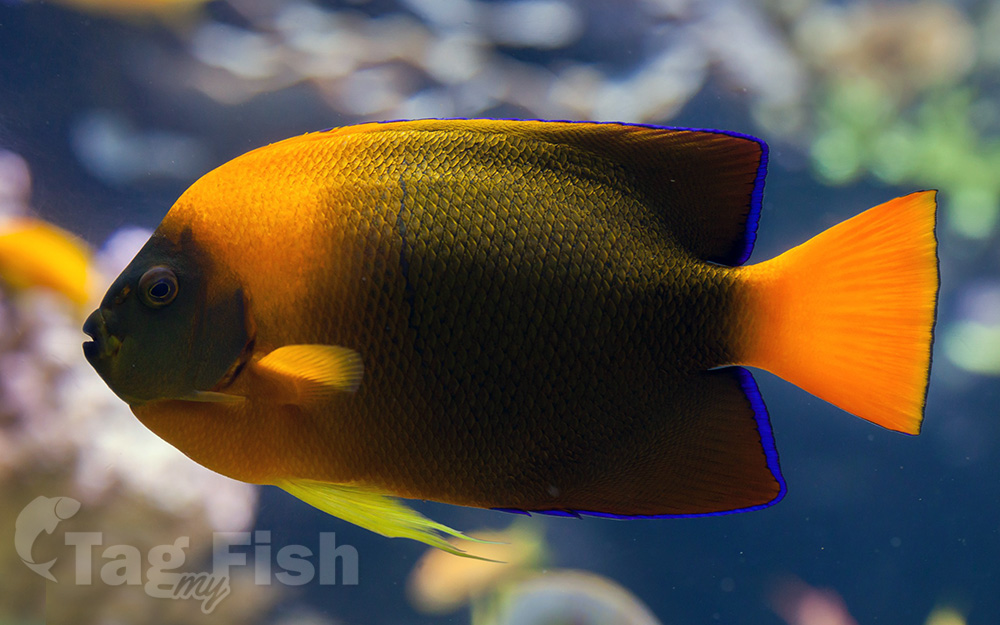Clarion angelfish
(Holacanthus clarionensis)

Classification
General data
The Clarion angelfish has a laterally compressed, quadrilateral body. It has a small mouth which is equipped with bristle like teeth.
The juveniles have an overall colour of yellowish-orange on the body and fins; the body is marked with a number of blue vertical bars which fade and, eventually, disappear as the fish matures. The juveniles may also have blue lips and blue margins on the dorsal and anal fins.
The adults have a brownish face, with the adjacent part of the body behind reddish orange and the posterior body being browner. The dorsal and anal fins are bright orange while the caudal fin is vermilion.
The dorsal fin contains 14 spines and 17-19 soft rays while the anal fin has 3 spines and 19-19 soft rays.
This species attains a maximum total length of 20 centimetres (7.9 in).
The Clarion angelfish has a very limited range in the Eastern Pacific Ocean, being largely restricted to the Revillagigedo Islands of Mexico. Vagrants have occasionally been reported from the southern tip of Baja California and the southeastern part of the Gulf of California, as well as Clipperton Island, a French territory.










